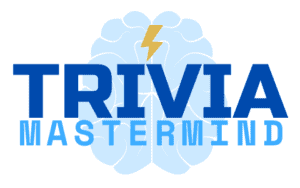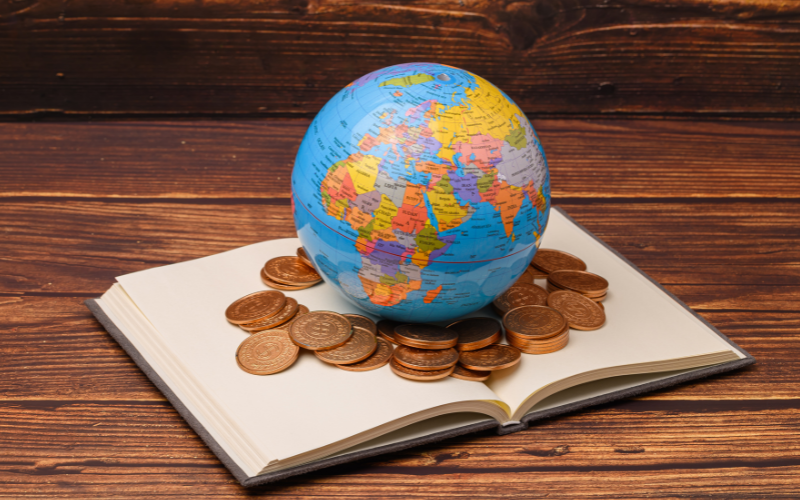
Money, as we know it today, has come a long way from its humble beginnings as simple objects of trade. The fascinating history of money spans across civilizations and epochs, reflecting the evolution of societies and their intricate economic systems. From the days of barter systems to the modern era of digital currencies like Bitcoins, each step in this journey marks a significant milestone in our understanding of value exchange and economic progress.
The List of the 6 Historical Forms of Money
6. Barter Systems: The Early Days
Since 6000 BCE
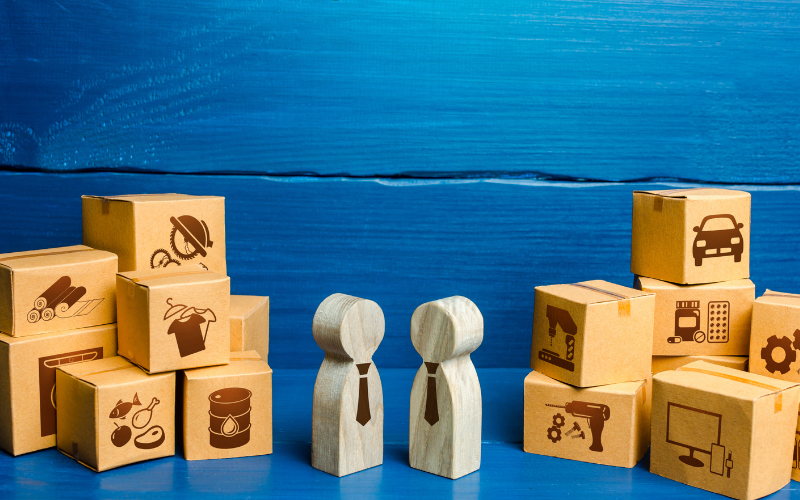
Long before coins and bills, people traded goods directly. Picture a farmer exchanging a bushel of wheat for a cow from a herder. This barter system, while straightforward, had limitations. It relied on the coincidence of wants, where both parties needed what the other had. This inefficiency led to the development of more standardized mediums of exchange.
As societies grew more complex, the barter system faced challenges. Not only did both parties need to find someone who wanted what they had and had what they wanted, but the value of different goods was also difficult to quantify accurately. A bushel of wheat might not be equivalent to the value of a cow, causing disputes and difficulties in establishing fair trades. This prompted the quest for a more universally accepted and convenient form of trade, which eventually paved the an evolution to money.
5. The Emergence of Commodity Money
2500 BCE

Enter commodity money, where items with intrinsic value, like gold, silver, or grains, started representing value. These commodities were widely accepted as payment and had value beyond their use as money. In ancient civilizations like Egypt and Mesopotamia, grains and precious metals served as a bridge between barter and more advanced monetary systems.
The use of commodity money brought newfound efficiency to trade. The universal recognition of the value of precious metals, for example, made transactions easier to negotiate and reduced the uncertainty that accompanied the barter system. This transition marked an important step in the history of money, as it introduced the concept of a standardized unit of value that could be exchanged for goods and services. Over time, societies recognized the convenience of using commodities with intrinsic value as a medium of exchange, but even this system had its limitations. The weight and storage of these commodities posed logistical challenges, especially as trade expanded beyond local communities. As a result, the search for more practical forms of money continued.
Read More Fun Facts
Learn more fun facts with Trivia Mastermind content.
4. The Birth of Coins and Minting
600 BCE
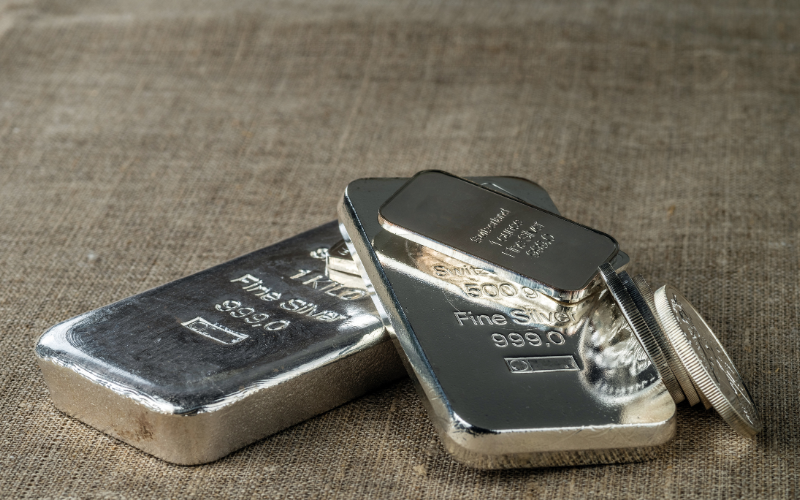
Around 600 BCE, the Lydians in present-day Turkey introduced the world to the concept of minted coins. These standardized pieces of metal made trade easier, as their value was guaranteed by the issuing authority. Coins spread across the Mediterranean, shaping the economic landscape of empires like Greece and Rome. This period marked the transition from commodity money to representative money, where the physical commodity was replaced by a symbol of value.
The introduction of coins brought a level of convenience and universality to trade that hadn’t been seen before. These stamped pieces of metal were recognized as official forms of payment, eliminating the need to weigh and assess the value of commodities during transactions. Additionally, the use of coins provided a new level of security, as they were difficult to counterfeit compared to the raw materials used in commodity money. The concept of coins caught on rapidly, and soon various civilizations began minting their own coins, each bearing unique designs and markings that represented their culture and heritage. This marked a significant shift toward a standardized and widely accepted form of currency, setting the stage for the further evolution of money.
3. Paper Money and Banking
1690 CE
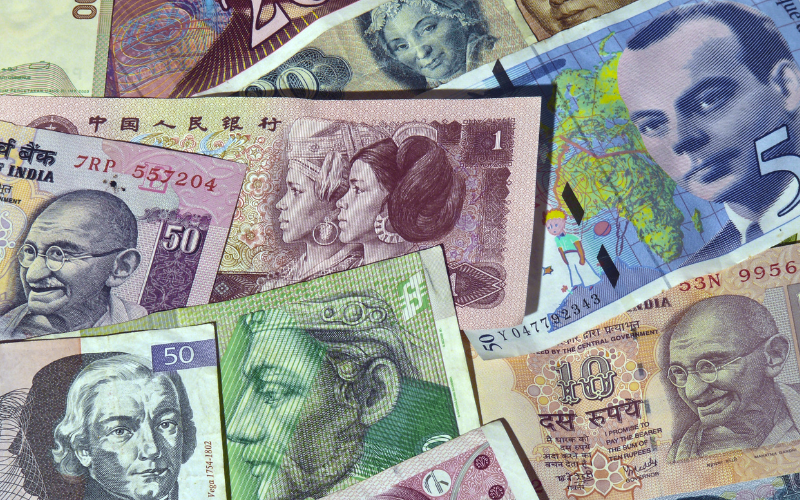
As trade expanded, carrying heavy metal coins became cumbersome. The Chinese were pioneers in using paper money, which started as promissory notes from merchants. By the Middle Ages, European merchants had adopted similar practices, effectively creating early forms of banking. Yet, paper money faced challenges like inflation and lack of trust in its underlying value.
The introduction of paper money revolutionized the way transactions were conducted. Instead of relying solely on physical coins, people could now exchange pieces of paper that represented a certain value. This innovation brought about greater flexibility in conducting business and facilitated long-distance trade. However, as with any new form of currency, challenges emerged. The value of paper money was often tied to the amount of precious metals held in reserve, but governments and authorities didn’t always maintain the necessary reserves. This led to instances of inflation, where the value of the paper money decreased over time. Additionally, the widespread acceptance of paper money required a significant level of trust in the issuing entity, whether it was a government or a private institution. Despite these challenges, the concept of paper money laid the foundation for the modern banking system and the further evolution of currency.
Play Trivia!
Challenge yourself and play trivia questions with answers and explanations.
2. The Gold Standard and Modern Banking
1871 CE

The implementation of the gold standard in the 19th century was a significant milestone in the history of money. This system provided a fixed link between paper money and a tangible asset, gold, which instilled confidence in the value of currency. However, the gold standard had its challenges, especially during times of economic growth when the supply of gold couldn’t keep up with the expanding economies.
This limitation prompted the need for a more flexible monetary system. As a response, central banks were established to regulate and manage the money supply, and modern banking systems emerged. These central banks played a pivotal role in stabilizing economies, regulating interest rates, and acting as lenders of last resort during financial crises. The evolution from the gold standard to modern banking marked a shift towards a more adaptable and regulated financial framework that could better accommodate the complexities of modern economies.
1. Digital Currencies: A New Frontier
2009 CE
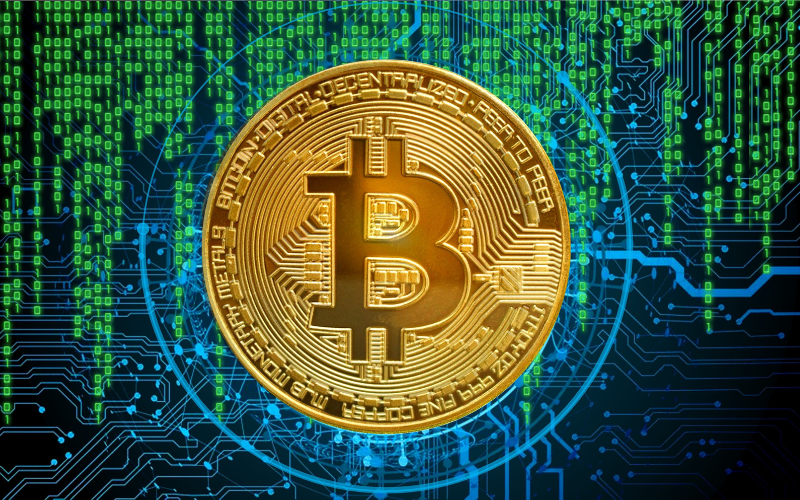
In recent decades, the rise of digital technologies has reshaped the landscape of money. Digital currencies like Bitcoin emerged, using cryptography to secure transactions and control the creation of new units. These decentralized currencies offer potential for borderless, peer-to-peer transactions, challenging traditional financial institutions.
This disruptive potential has challenged traditional financial institutions and sparked debates about the future of money and the role of governments in regulating these innovative forms of currency. As the world becomes more interconnected through the digital realm, digital currencies continue to push the boundaries of what is possible in the realm of monetary exchange, opening up exciting possibilities and posing complex questions about the nature of value, trust, and financial systems in the digital age.
Conclusion
The journey of money from barter systems to digital currencies showcases humanity’s constant quest for efficient means of value exchange. Each era’s monetary evolution reflects the economic, social, and technological progress of its time. As we embrace digital currencies and explore the potential of blockchain technology, it’s worth remembering that the history of money is a story of innovation, adaptation, and the intricate dance between trust, value, and progress.
Read More Fun Facts
Learn more fun facts with Trivia Mastermind content.
Play Trivia!
Challenge yourself and play trivia questions with answers and explanations.
